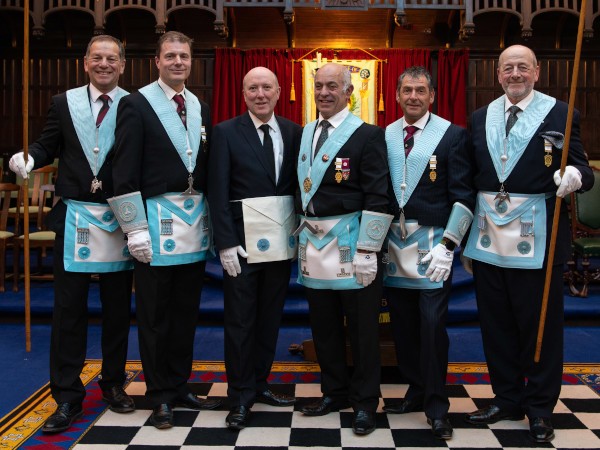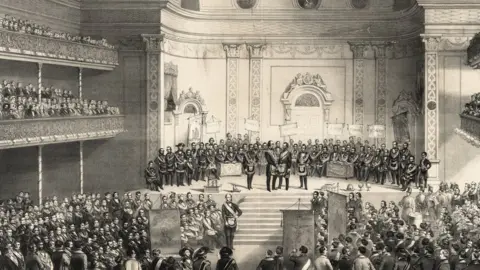Learn the Traditions and Insights to Join Freemason Across the World
Learn the Traditions and Insights to Join Freemason Across the World
Blog Article
Discovering the Mysteries of the Freemason: What You Need to Know
The Freemason, a term usually shrouded in intrigue and debate, stands for an intricate tapestry of historical reality and modern misconception. Developed in the late 18th century, this secret society was initially rooted in the Enlightenment's suitables but has actually considering that come to be associated with conspiracy concepts about elite control.
Beginnings of the Freemason
The origins of the Freemason are soaked in a mix of historic intrigue and ideological eagerness. Developed in 1776 in Ingolstadt, Bavaria, by Adam Weishaupt, the group was originally created as a secret culture intended at promoting Knowledge perfects such as factor, secularism, and the separation of church and state. Weishaupt, a teacher of canon regulation, sought to challenge the prevailing authority of the church and state, which he considered as overbearing establishments stifling intellectual and personal liberty.
The Freemason looked for to recruit prominent participants from numerous social sectors, consisting of national politics, academia, and the arts, to foster a network dedicated to these Knowledge principles. The society run under a veil of secrecy, using coded language and routines to shield its participants from mistreatment, especially offered the repressive climate of the time. However, the Freemason encountered substantial resistance from both governmental authorities and religious establishments, which viewed the team as a hazard to their power.
Secret Figures and Participants
Who were the pivotal numbers that formed the Freemason's early impact and instructions? The Bavarian Freemason, established in 1776 by Adam Weishaupt, arised as a feedback to the oppressive societal structures of the time.
One more significant number was Johann Gottlieb Fichte, a famous theorist whose concepts on nationalism and education resonated with the Freemason's objectives. Fichte was not an official member, his philosophical bases influenced the group's belief. Furthermore, numbers like the writer and philosopher Johann Wolfgang von Goethe were related to the wider intellectual motions of the moment, although their straight participation with the Freemason remains debated.
These crucial numbers added to the Freemason's very early instructions, pressing the boundaries of political and social thought, while their cumulative initiatives intended to challenge recognized standards and promote a climate of progressive adjustment in Europe.
Myths vs. Truth
Numerous false impressions surround the Freemason, commonly mixing reality with fiction in a method that obscures its true nature. The concept that the Freemason proceeds to exert significant impact over globe events is a misconception - how to become a freemason.
Another prevalent misconception is that the Freemason makes up a network of elite individuals adjusting worldwide events. Actually, several conspiracy concepts exaggerate the team's value, connecting unfounded objectives to societal patterns and events. This has led to that site an oversimplified sight of complex issues.

Modern Analyses
Contemporary interpretations of the Freemason usually reflect more comprehensive societal anxiousness and an attraction with secrecy and power. This contemporary lens frequently links the Freemason with conspiracy theories that recommend a covert elite coordinates globe events, adjusting federal governments and economic situations for their own gain. Such stories use a deep-rooted suspect of authority, particularly in times of crisis or social turmoil.

In addition, some contemporary interpretations frame the Freemason as a metaphor for the intricacies of globalization and the interconnectedness of prominent individuals and organizations. This point of view encourages a vital assessment of how power characteristics run in today's world, highlighting the balance between transparency and privacy in governance and business techniques.
Cultural Influence and Heritage
Influenced by centuries of intrigue, the cultural effect and legacy of the Freemason extend much past its historical origins. This secret society, established in the late 18th century, has actually permeated different elements of pop culture, from literature and why not find out more film to songs and art. The idea of the Freemason has evolved into a symbol of conspiracy theory concepts, frequently standing for a websites regarded surprise power manipulating worldwide events.
In literature, authors like Dan Brown have actually woven the Freemason right into intricate plots, fascinating visitors with themes of privacy and power. Movies such as "National Treasure" and "The Da Vinci Code" even more continue the attraction of the culture, blending truth with fiction to create appealing narratives.
The Freemason's impact additionally expands right into music, with artists referencing the company to stimulate motifs of disobedience and societal critique. This portrayal has contributed to a fascination with the idea of clandestine groups managing the bars of power, showing social anxiousness concerning authority and openness.
Inevitably, the Freemason's heritage is an intricate tapestry of misconception and fact, forming understandings of privacy and control in modern discourse. Its long-lasting existence in society emphasizes humanity's perennial pursuit for comprehending hidden realities.
Conclusion
The expedition of the Freemason reveals an intricate interaction in between historic facts and contemporary myth-making. Established in the Knowledge period, this society aimed to test oppressive structures, yet its legacy has been overshadowed by conspiracy theories that suggest elite control. Comprehending the distinctions in between the original perfects and modern interpretations is crucial for comprehending the enduring fascination with the Freemason and its substantial influence on social narratives surrounding power and privacy in culture.
Report this page